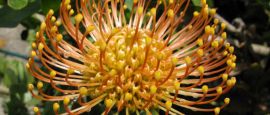Madeira Weather, climate and geography
Geography
The group comprises the main island of Madeira, the smaller island of Porto Santo, the three uninhabited islets of Ilheu Chao, Deserta Grande and Ilheu de Bugio, and the Selvagens (a group of uninhabited islets located south of Madeira). The islands are hilly and of volcanic origin and the coast of Madeira is steep and rocky with deep eroded lava gorges running down to the sea. These are particularly impressive on the north coast of Madeira island. The largest of a group of five islands formed by volcanic eruption, Madeira is in fact the summit of a mountain range rising 6.5km (4 miles) from the sea bed.
At Cabo Girão, west of the capital of Funchal, is the second-highest cliff in the world. Inland, Pico Ruivo is the island's highest point (1,862m/6,109ft) with the slightly lower Pico de Arieiro (1,810m/5,940ft) nearby. Both are destinations for sightseeing tours, commanding fine views of the surrounding mountains. Madeira's volcanic origin means that it has no sandy beaches, although there is a small beach, Prainha, near the whaling village of Canical on the extreme east of the island. Madeira itself is 56km (35 miles) long and 21km (13 miles) wide. Porto Santo is much smaller, only 14km (9 miles) long and 5km (3 miles) wide, with a long, golden sandy beach.
Do you have any Feedback about this page?
© 2025 Columbus Travel Media Ltd. All rights reserved. No part of this site may be reproduced without our written permission, click here for information on Columbus Content Solutions.




 You know where
You know where